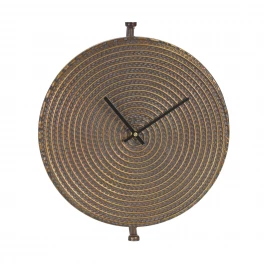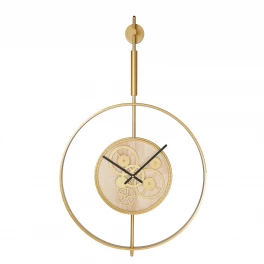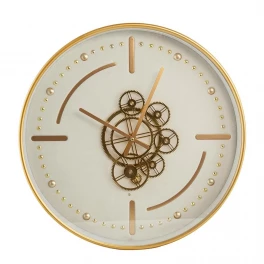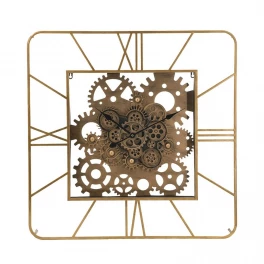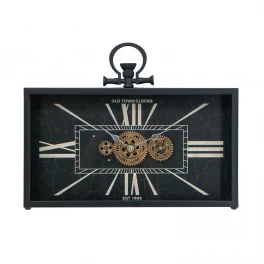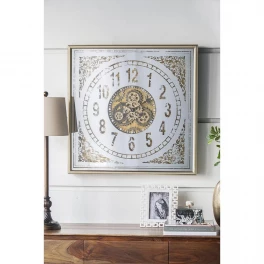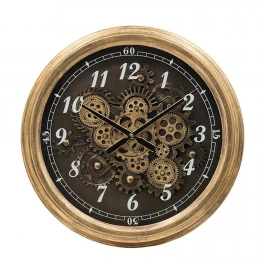Nothing says elegance in a home’s interior quite like the presence of a grandfather clock. These stately sentinels faithfully announce the time and also announce to visitors that you have good taste when it comes to interior design and fine furnishings. A grandfather clock is more than just a timepiece. Its fine craftsmanship and size make it a cherished possession that can be passed down from generation to generation. Although at home in a large room with high ceilings, these clocks can also enhance an awkward corner, an entryway, a landing, or just about any space where they're out of the way, yet still highly visible. Not every house is ideal for a grandfather clock, but with a little rearranging, you should be able to find some space that will show off the beauty of this timeless classic.

Photo by Artazum on Shutterstock
The History of Grandfather Clocks
Grandfather clocks, originally known as longcase clocks, originate in the year 1670 with an English clockmaker named William Clement. Clement’s unique design featured a heavy pendulum that swung exactly once per second to keep perfect time. The pendulum and inner workings of the clock were encased in a tall wooden cabinet. These longcase clocks were constructed out of the finest wood by skilled craftsmen and were showcased in the homes of the wealthy. Through a combination of precision technology and superb craftsmanship, these tall clocks soon found a revered place in households across the country.

Photo by BaLL LunLa on Shutterstock
The “grandfather” renaming of the clock was a result of a popular song written in 1875 by Henry Clay Work. “My Grandfather’s Clock” told a story about a longcase clock that stood in the George Hotel in Yorkshire, England. Owned by two brothers, the clock kept perfect time for many years. When the first brother died, the clock began to lose time. Upon the death of the second brother, the clock stopped completely and couldn’t be made to work again. The popularity of the song forever changed the name of the longcase clock.
Where to Put a Grandfather Clock
Unlike a wall clock, a grandfather clock requires a little bit of floor space. The base of an average grandfather clock measures 12 inches long by 20 inches wide, and they can stand from 6-8 feet tall. These clocks need space to breathe, so you don’t want to put them tight against a wall. To wind the clock, you’ll need to be able to open the cabinet door. Because these clocks are wooden, they require an environment that’s not too hot or cold, and not too dry or damp. Grandfather clocks should be treated like fine furniture, which is really what they are. Grandfather clocks also require regular maintenance. The maintenance access panel can be on the side, but it’s usually located in the back. You'll need to be able to pull the clock forward every so often to open the maintenance panel.

Photo by Iriana Shiyan on Adobe Stock
Foyers, Entryways, and Hallways
Foyers and entryways often have a lot of awkward and empty space that would be a great fit for a grandfather clock. A grandfather clock really dresses up a foyer and is one of the first things people see when they enter your home. It's a good idea to keep these clocks away from bedrooms because they chime every hour or half-hour. If placed in an entryway, make sure the clock is protected from moisture and extreme temperatures. Depending on the layout of your homes, hallways sometimes have spaces that are perfect for a grandfather clock.

Photo by Michelle Marsan on Shutterstock
Staircase Landings
Because of their substantial weight (up to 250 pounds), it’s best to keep a grandfather clock on the main floor. These clocks are hard to move and can be damaged when people try to move them up or downstairs. If you can safely move a grandfather clock up a few stairs, a wide staircase landing is a great perch for these clocks to announce the time.

Photo by Artazum on Shutterstock
Dining Rooms and Living Rooms
Dining rooms and living rooms typically have the most space in a house. A grandfather clock can be tucked in a corner or given prominence as a focal point for the room. A grandfather clock has a commanding presence and can draw attention no matter where it's located. The woodgrain of the cabinet will complement wooden floors and other fine furniture in the room.

Photo by Artazum on Shutterstock
Bedrooms
Grandfather clocks tick loudly as the pendulum swings, and also sound their presence by regularly chiming “like clockwork.” If you’re a light sleeper, a bedroom is probably not the best room for a grandfather clock. Many clocks have a silent feature that stops the chime, but the ticking can still be loud when the house is quiet.

Photo by ArtOfPhotos on Shutterstock
Wherever It Fits
A grandfather clock can go just about anywhere as long as there is enough room. You certainly want to show off your fine timepiece, but it can be placed under stairs, in libraries and studies, a guest bedroom (your guests will never return), and in any room that won’t subject the clock to moisture or high temperatures. Wherever you find space for a grandfather clock, it will add interest and character to the room.
Buying a Grandfather Clock
If you’ve always wanted a grandfather clock, you should have no problem finding one. But first, decide if you want an old one or a new one. Grandfather clocks are still being made and can be purchased online and through stores that feature fine furniture. A new grandfather clock probably won’t have the same charm and superior craftsmanship than an antique clock has, but newer grandfather clocks come with warranties, and their parts are much easier to service and/or replace. New clocks also come with modern day features such as volume control and chime-silence options. It can be hard to find parts for old grandfather clocks that have not been maintained, and they may require expensive overhauling to keep accurate time. If you’re buying an older clock, inspect the inner workings thoroughly, and avoid clocks that have dirty or rusty gears and cases with signs of water or heat damage.

Photo by Xubang Yang on Dreamstime
If the price tag is an issue, classified listings are a great way to find a grandfather clock for about half the price of a new one. People who are downsizing or moving may be willing to part with their heirloom for whatever they can get. Auctions and estate sales are other places where grandfather clocks can be had for a bargain.
Maintenance
Grandfather clocks have working gears that need regular maintenance to keep them running. The gears should be oiled approximately every two years. If this isn't done, the oil on the gears will dry out and become sticky, which attracts dust. This dust will make the gears work harder, and eventually wear them out.
A grandfather clock’s cabinet and glass door also need to be dusted and cleaned as you would with any other fine wooden furniture. Keeping dust off the cabinet helps keep dust from getting in the cabinet.
To keep the clock running, it needs winding. You do this by pulling chains or using a crank to return the weights to the top. Most grandfather clocks have three weights that control the chime melody, the pendulum, and the hour strike. These weights slowly drop as their energy powers the clock. If the weights drop all the way to the bottom of their chain or cable, the clock will stop. Most clocks need winding every seven days or so. Some newer grandfather clocks are battery operated, and the weights are purely for decoration. These are cheaper clocks and do not have the appeal of William Clement’s original design.
Pendulum Wall Clocks
Do you like the idea of a pendulum clock that chimes on the hour, but don’t have the floor space? Pendulum wall clocks are a miniature version of the grandfather clock made to hang on a wall or sit on a shelf or mantel.
These clocks feature gears and a pendulum in a wooden case which ticks and chimes just like its revered grandfather. Instead of weights, the clocks require winding a spring gear with a key. Some will run for up to a month before needing rewinding. Weights in the case are purely for decorative purposes. These smaller clocks can add interest and character to any room in a house.
Nearly unchanged since its original design, homeowner’s have been able to enjoy the classic appeal of the grandfather clock for centuries. From the fine craftsmanship of the cabinet to the accuracy of the inner workings, these majestic clocks are an attractive element in any home.







